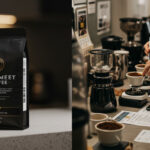
The Timeless Charm of Traditional Coffee: A Journey Through Flavor and Tradition
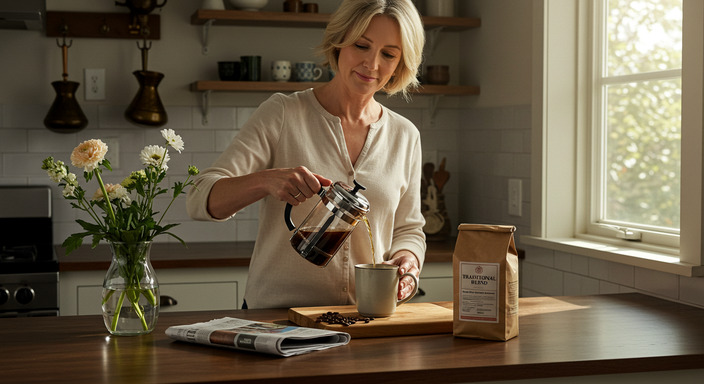
Table of Contents
ToggleThe Roots of Traditional Coffee
Origins and Historical Significance
The story of coffee begins in the lush highlands of Ethiopia, where legend tells of a goatherd named Kaldi who first discovered the energizing effects of coffee beans. From these humble beginnings, coffee spread across the Arabian Peninsula, becoming a cornerstone of social and cultural life in the Middle East. By the 15th century, coffeehouses, or qahveh khaneh, began to emerge as vibrant hubs of conversation, creativity, and community.
As trade routes expanded, coffee found its way to Europe in the 17th century, where it quickly became a cherished beverage. The first coffeehouse in England, The Angel, opened in Oxford in 1650, paving the way for a cultural revolution. Coffeehouses became known as “penny universities,” where people gathered to discuss ideas, politics, and art over a steaming cup of brew. This tradition of coffee as a catalyst for connection remains at the heart of its enduring appeal.
Cultural Diversity in Coffee Traditions
Across the globe, coffee has woven itself into the fabric of countless cultures, each with its own unique traditions and rituals. In Italy, espresso is more than a drink—it’s a way of life, often enjoyed standing at a bustling café bar. Meanwhile, in Turkey, coffee is brewed slowly in a cezve and served with a side of conversation, often accompanied by a glimpse into one’s fortune from the leftover grounds.
In the United States, the diner-style drip coffee became a staple of American mornings, symbolizing simplicity and comfort. From the café con leche of Latin America to the spiced coffee of North Africa, each tradition reflects the values and history of its people. These diverse practices remind us that coffee is not just a beverage but a universal language of connection.
Brewing Methods That Stand the Test of Time
Drip Coffee: A Diner-Side Staple
Few things evoke the comforting nostalgia of a classic American diner like a steaming cup of drip coffee. This timeless brewing method, with its humble beginnings in the early 20th century, has become a cornerstone of coffee culture across the nation. The simplicity of pour-over technology, where hot water drips through a filter filled with ground coffee, has made it a favorite in households and diners alike.
What makes drip coffee so enduring? Its reliability and versatility are unmatched. Whether you’re sipping it black or adding a splash of cream and sugar, drip coffee delivers a consistent, smooth flavor that pairs perfectly with a hearty breakfast or a thoughtful conversation at the counter. It’s the kind of brew that feels like home, no matter where you are.
French Press: Simplicity in Every Sip
For those who appreciate a more hands-on approach to their coffee ritual, the French press offers a pure and unfiltered experience. Invented in the 1920s, this method has maintained its charm by preserving the essence of the coffee bean. Unlike drip coffee, the French press allows the grounds to steep directly in hot water, producing a rich, full-bodied cup that’s bursting with flavor.
The beauty of the French press lies in its simplicity. With just a few steps—grinding the beans, adding hot water, and pressing the plunger—you can craft a brew that feels both artisanal and approachable. It’s a method that invites you to slow down, savor the process, and connect with the tradition of coffee-making. Whether enjoyed on a quiet morning or shared with friends, French press coffee is a reminder of the simple pleasures in life.
| Method | Key Features |
|---|---|
| Drip Coffee | Consistent, smooth, diner-style appeal |
| French Press | Full-bodied, hands-on, rich flavor |
The Role of Traditional Coffee in Daily Life
Morning Rituals and Comfort
Few things rival the simple joy of that first sip of coffee in the morning—the rich aroma curling in the air, the warmth seeping into your hands, the quiet certainty that no matter what the day holds, this moment is yours. Traditional coffee is the anchor of morning routines, a ritual passed down through generations that transforms a mundane start into something sacred. Whether it’s the slow percolation of a stovetop brew, the steady drip of a trusty machine, or the careful pour of a French press, the act itself is as comforting as the drink.
Even in today’s fast-paced world, coffee remains an unhurried pleasure. It’s the pause between waking and doing, the deep breath before diving into obligations. For many, it’s a cup shared with a loved one, sipped in silence on the porch, or savored with the morning paper—proof that some traditions are timeless for a reason.
- Warmth & familiarity: The scent alone can evoke childhood memories—parents brewing a pot, grandparents stirring sugar into their cups.
- Predictability in chaos: No matter how hectic life gets, coffee offers a small, steady constant.
- A personal ritual: From grind to pour, the process is as much a part of the experience as the drink itself.
Social Connections Over a Cup
Coffee has long been the quiet architect of connection, drawing people together in diners, kitchens, and café corners. It’s the catalyst for conversation, the unassuming companion to laughter, confessions, and quiet companionship. In many cultures, sharing coffee isn’t just hospitality—it’s an invitation to slow down and be present.
Think of the classic American diner, where refills flow freely and servers call you “hon.” Or the Italian espresso shared standing at a bar, a quick but meaningful pause in the day. Even at home, offering coffee is an act of love—a way to say, “Stay a little longer.” The clink of mugs, the steam rising between friends, the unspoken understanding that time taken over coffee is never wasted—that’s the magic of tradition.
“In my family, coffee meant ‘talk to me.’ You didn’t just drink it; you sat, you listened, you lingered. That’s where the real stuff happened.” — Maria, 62, New Jersey
| Tradition | Meaning |
|---|---|
| Southern “coffee hour” | Afternoon gatherings where neighbors drop by for cake and stories |
| Midwest diner culture | Endless refills and life advice from waitresses who know everyone |
| Immigrant family customs | Strong, sweet brews served in tiny cups, bridging old and new worlds |
The Art of Selecting the Perfect Beans
The Importance of Quality and Freshness
When it comes to crafting the perfect cup of coffee, the journey begins with the beans. Quality and freshness are the cornerstones of a truly exceptional brew. Imagine the aroma of freshly ground beans filling your kitchen—this is the promise of starting with the best. High-quality beans, sourced from reputable growers, ensure a rich and balanced flavor profile. Freshness, on the other hand, is non-negotiable. Stale beans lose their natural oils and complex notes, leaving behind a bland and uninspiring cup. Always look for beans that have been recently roasted and stored properly to preserve their integrity.
- Check the roast date on the packaging to ensure freshness.
- Store beans in an airtight container away from light and heat.
- Grind beans just before brewing to maximize flavor.
Traditional Roasts and Their Unique Flavors
The art of roasting coffee is a time-honored tradition that transforms raw beans into the familiar flavors we cherish. Each roast level brings its own character to the table, offering a spectrum of tastes that cater to every palate. Light roasts, with their bright acidity and floral notes, are perfect for those who enjoy a vibrant and nuanced cup. Medium roasts strike a balance, offering a harmonious blend of sweetness and body, often reminiscent of the diner-style coffee that has graced countless morning tables. And then there are dark roasts, bold and robust, with deep, smoky undertones that evoke the warmth of a crackling fire on a chilly morning.
| Roast Level | Flavor Profile |
|---|---|
| Light | Bright, floral, with hints of citrus |
| Medium | Balanced, smooth, with caramel and nutty notes |
| Dark | Bold, smoky, with a rich, full-bodied finish |
Understanding these roast profiles allows you to choose beans that align with your personal preferences, whether you’re starting your day with a classic cup or savoring a moment of quiet reflection in the afternoon.
Preserving Coffee Traditions for Future Generations
Passing Down Family Recipes
There’s something profoundly special about a cup of coffee brewed from a recipe handed down through generations. Family coffee traditions are more than just a method of preparation—they’re a connection to the past, a way to honor those who came before us. Whether it’s your grandmother’s secret blend of spices in her Turkish coffee or your father’s precise ratio of grounds to water in his classic drip brew, these recipes carry stories and memories.
Consider jotting down these cherished methods in a family cookbook or sharing them during gatherings. Teaching younger family members how to brew these traditional recipes ensures that these customs live on, creating a bridge between the old and the new. It’s not just about the coffee; it’s about preserving a piece of your heritage.
Embracing Traditional Brewing in a Modern World
In a world dominated by instant coffee pods and high-tech espresso machines, there’s a growing appreciation for the simplicity and authenticity of traditional brewing methods. Pour-over, French press, and stovetop percolators are making a comeback, not just as nostalgic novelties but as ways to slow down and savor the process.
Here are a few ways to incorporate traditional brewing into your modern routine:
- Start your day with intention: Take a few extra minutes to brew your coffee using a method that connects you to its roots.
- Experiment with cultural traditions: Try making Vietnamese iced coffee, Italian moka pot espresso, or Ethiopian coffee ceremonies to explore global coffee heritage.
- Share the experience: Invite friends or family to join you in brewing and tasting, turning it into a shared ritual.
By embracing these time-honored techniques, we not only honor the craft of coffee-making but also create moments of mindfulness in our fast-paced lives.
“Coffee is a language in itself.” – Jackie Chan
The Sensory Experience of Traditional Coffee
Aroma: The First Invitation
The moment you open a bag of freshly ground coffee, the aroma envelops you like an old friend. It’s a rich, earthy scent that carries hints of warmth and comfort. Whether it’s the nutty undertones of a light roast or the deep, chocolatey notes of a dark roast, the aroma of traditional coffee is an invitation to slow down and savor the moment. This simple pleasure has the power to transport you to a cozy kitchen, a bustling diner, or a quiet café, no matter where you are.
Taste: A Symphony of Flavors
The taste of traditional coffee is where its magic truly comes alive. Each sip is a harmonious blend of complexity and simplicity. The bitterness of the brew is balanced by subtle sweetness, while notes of caramel, fruit, or spices dance on your palate. It’s a reminder that coffee doesn’t need extravagant additions to be extraordinary. A well-brewed cup is a testament to the artistry of simplicity, offering a sensory experience that’s both familiar and endlessly rewarding.
Texture: The Feel of Comfort
The texture of traditional coffee is often overlooked, but it’s an essential part of the experience. The smooth, velvety mouthfeel of a perfectly brewed cup adds a layer of comfort to every sip. Whether it’s the light, airy consistency of a pour-over or the rich, full-bodied sensation of a French press, the texture enhances the ritual of coffee drinking. It’s a tactile reminder of the care and craftsmanship that goes into every cup.
The Joy of Simplicity in Every Sip
At its core, traditional coffee is a celebration of simplicity. It’s about finding joy in the uncomplicated, in the ritual of grinding beans, brewing a pot, and taking that first, satisfying sip. It’s a reminder that some of life’s greatest pleasures are found in the everyday. Traditional coffee connects us to our roots, whether it’s a family recipe passed down through generations or the familiar hum of a diner coffee machine. It’s a timeless tradition that brings people together, one cup at a time.
FAQ: Common Questions About Traditional Coffee
- What makes traditional coffee different from modern coffee trends?
Traditional coffee focuses on the purity of the brew, often using simple methods like drip or French press, while modern trends emphasize elaborate preparations and specialty ingredients. - How can I enhance my traditional coffee experience?
Use freshly ground beans, experiment with brewing times, and pay attention to water temperature to bring out the best flavors in your coffee. - Why does traditional coffee evoke such nostalgia?
Its familiar aroma, taste, and texture often remind us of cherished memories, making it a comforting and timeless beverage.
is a writer and editor at Coffee With Finance, blending her love for coffee, personal finance, and visual storytelling. She crafts engaging articles, curates site images, and shares brewing tips, bean origins, and practical money advice. Anna believes that managing finances, like making great coffee, should be intentional and rewarding — bringing clarity, warmth, and beauty to every story she tells.


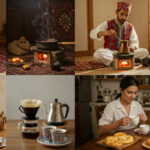










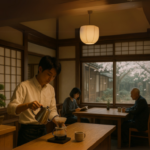




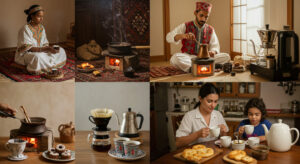



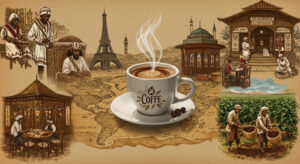

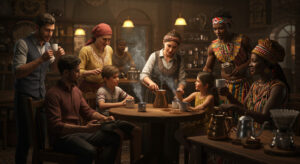


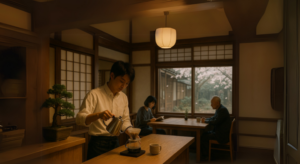
Post Comment